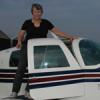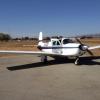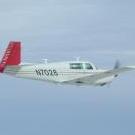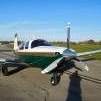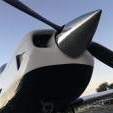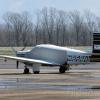Leaderboard
Popular Content
Showing content with the highest reputation on 10/15/2017 in all areas
-
Runway can be used with or without the gear. But once out of useable runway, I'd much rather have the altitude. So my gear comes up immediately on positive rate of climb. If the engine quits at the point of no useable runway, I'll have more altitude and therefore more options.3 points
-
I'm beginning to really like this airplane! Funny how much familiarity adds to the fun. That and smooth air, sunshine and tailwind. 2:45 from EDE to GFL. Sent from my SM-N910V using Tapatalk3 points
-
I’m a fairly new pilot but find it is much easier to bring up the gear well before the end of the runway. My reasoning is I can put the gear down very quickly, it is a lot more difficult to retract the gear at higher speeds where engine cooling is optimal, and it is one less thing to worry about later when things get busy.2 points
-
I think that this is a perfectly acceptable outcome ---- the name of the game at uncontrolled airports is communication. The right-of-way rules exist primary to provide a default action in the event that the aircraft can't work it out (e.g., because one or both is nordo, or one is talking to approach). If it were me in the 152, I'd tell you to please go ahead and land -- and if I were downwind, I might ask the 152 to confirm position and then ask if it's okay for me to scoot in ahead of him. I will say, though, that without visual verification of position, crazy things can (and do) happen at uncontrolled fields. I've heard people report 10 miles out and seen them clearly about to pass over the field. And I've heard people report short final when they were nowhere to be seen. So I usually try to be very very conservative if I hear a position report and don't see the aircraft.2 points
-
Flaps increase lift and add drag. Takeoff flaps increase lift to get the airplane off the runway quicker while adding minimal drag. For more than take off flaps the drag increase overwhelms any lift benefit. As speed increases so does lift and the need for flaps diminishes. Therefore I'm not in a great hurry to clean up takeoff flaps. A white arc with a Vfe of 115 KIAS is very generous. I retract them when speed is well on its way and has safely increased in the climb. Typically around 1000 feet or so.2 points
-
FOUND IT!!!!! nothing to do with the annual everything to do with the reman heads @ 30 hours since top end. 1 I did have a “diesel” effect when shutting down 2 my manifold pressure was High at idle 3 the old plugs were burning leaner than the rest = intake leak but you won’t believe the cause (found it whilst replacing plugs while troubleshooting ) it must have been loose for a while and finally fell out.2 points
-
I wouldn’t let a non mooney shop manipulate any of the gear “settings”. I would let the non mooney shop do whatever they usually do for airworthiness inspections. Then go back to Weber or someone and have them check the gear preload, trim jack screw, etc. That way if an adjustment is needed they can do it and know what they are doing. I had four mooney expert and two MSC annuals in a row before I was comfortable enough having a local shop annual her. And my local shop is an IA with 40 years of mooney ownership and maintenance experience (he was a shop that started reporting the flap hinge issues and tubular frame issues early on ..). Just remember MSC does not equal mooney expert. That club is exclusive and most of us know its membership2 points
-
I don't normally comment on crash threads. One of the things about the Mooney wing is to get it flying. (shown to me by a CMDR USN had a 2000 hour F-18 patch) There are a couple of seconds after lift off while getting the gear up (Not sure when you did it) that you fly almost level. This gets speed up and gets the wing flying. It would be easy with trees coming up to pull up and jam the throttle, just like you would in a jet. The discipline to hold it down and let the wing fly is not natural when trees are in the windshield. You did react to the stall by pushing down which is what saved you. For those wanting to practice departure stalls, I would skip it. It is teaching the wrong muscle memory. STall horn blaring and pulling up more. That is wrong. It would be better to practice engine outs (up high of course) There is a very short reaction time From climbing out to having to push down once the engine is chopped. We did these last FR and it was an experience. We need more training on hear the stall horn and push down. You know for when you forget to reset the trim on takeoff. Buy another plane and get back up on that horse and ride it.2 points
-
2 points
-
A new Acclaim costs in the neighborhood of $800,000 and goes about 20 knots faster than the Bravo. Upgrading a Bravo to the ultimate as I did and will continue to do (G500 TXi and GFC 600 if it ever gets certified for the Bravo) makes perfect sense if you want a comparable airplane at ⅓ the cost all in. I'm a Garmin guy but you could also stick in the Avidyne 550 as a plug and play replacement for the GNS 530, although I've not had one student who has gotten one, yet.2 points
-
If I'm fast on gear speed I'll level off. If I really need to get down I'll climb for gear speed then drop everything out. Almost impossible to get to gear speed in a decent. Climbing to get to gear speed takes less NM than descending to Gear speed. So once everything is out the more altitude I can loose and the farther from the airport I still am. At 165kts, it takes about 7mi for me to slow up to approach speeds. (Negative boards) I'll plan my decent in minutes out. With a 500fpm planned decent. Works pretty well unless you need to stay high for a clearance or terrain. The Mooney has taught me a lot about planning. You get lazy flying say 182s and other stuff that sinks better. -Matt2 points
-
So you spend three-quarters of a million dollars on the fastest certified single-engine piston and you can't get a simple GUI change because of a lazy software engineer? I'm sorry, but I'd be blowing up Mooney and Garmin phone support and having a stern talking to someone up high if you have to have software "fooled" or setup inaccurately just to get something done right for almost a million friggin dollars. That is completely unacceptable!2 points
-
That's certainly a reasonable and conservative idea. But I can tell you I'd feel bad if I reported a 6-mile final and you said you'd break off your base leg to let me land first. I certainly wouldn't take offense or feel you'd violated the spirit or letter of the FARs if you proceeded to land in front of me.1 point
-
@toto, I get your point. But the first sentence falls apart in real life too, due to the nebulous understanding of "final approach", which is not formally defined in FAR 1.1. At what point does a landing aircraft transition from being "in flight" to being "on final approach to land"? Most VFR-only guys would probably say this happens on the base-to-final turn, but the OP specifically referenced the case of an aircraft on a practice instrument approach. I don't know the parameters at his airport, but the final approach fix for the GPS approach into my home airport is 6 miles from the threshold. No reasonable person thinks an aircraft on a practice approach here gets a 4-minute right-of-way (at 90 knots) upon crossing the FAF, vs. a guy who just turned base.1 point
-
@Vance Harral, I would think that the previous sentence of 91.113(g) would apply (quoted in the brief I linked above): "Aircraft, while on final approach to land or while landing, have the right-of-way over other aircraft in flight or operating on the surface, except that they shall not take advantage of this rule to force an aircraft off the runway surface which has already landed and is attempting to make way for an aircraft on final approach."1 point
-
AOPA published an ASI brief earlier this year on non-towered operations. Pretty much just a re-hashing of the FARs, which I think would say that the aircraft on final has the right of way (even if you're closer to the runway). https://www.faasafety.gov/files/notices/2017/Jun/Non-Tower_Airport_Comms.pdf FWIW1 point
-
In my E I actually raise the flaps right after lift off as long as it's not a short field or obstacles off the departure end. I like accelerating to Vy as soon as I lift off so that means the flaps come up. Gear comes up, usually after the flaps, once no more usable runway. Short fields I'm gear up at positive rate, climb at Vx and then flaps up clear of obstacles. Sent from my iPhone using Tapatalk1 point
-
Clear of obstacles and solid positive rate. Why: The airplane settles with flap retraction. Don't want to be doing that with trees coming up at you. Sent from my XT1585 using Tapatalk1 point
-
As long as you have CGA-540 valves and not the medical-type CGA-870 post-type valves, you shouldn't get many questions at welding or industrial shops. If I get any questions, I just tell them I'm experimenting with some secret brewing techniques. Since I live up here in beer-happy Oregon, that usually just gets some smiles and "oooh, okay"1 point
-
The easiest to use web site for clouds and could tops is windytv.com - way above the rest. SkewTLogPro is great for a point in space, like your departure and destination, but not that helpful is x-ctry planning IMO. Sent from my iPhone using Tapatalk1 point
-
Thought I would post a few examples of the hundreds that were there to see These are not paintings but made from pieced fabric1 point
-
In all the annuals I have done, my preloads have never changed. I'm not suggesting they can't, but I've not seen it happen.1 point
-
The most accurate way to find cloud tops is to climb through them . . . . Then file a PIREP so the rest of us know what they were. Leaving the Summit, a friend a couple hours ahead said he broke out at 5700 and flew to Atlanta in the clear. My course was shorter and a little west, and I was solid IMC at 7000 until almost even with Montgomery. Someone who left a couple hours after me was solid IMC almost to Birmingham. The thing about the weather is, you get what you get . . . . .1 point
-
Your F manual matches my '66E manual for Vx clean. The J speed seems to be KIAS. Or perhaps it is with takeoff flaps which would probably be best practice for obstacle clearance. (FWIW, my '66E Vx, with takeoff flaps is 70 kias = 80 mIas; Vx clean is 82 kias = 94 mIas).1 point
-
Definitely worthwhile doing it but probably after the engine had broken in because the whole ordeal is a bit of trial and error and your engine will be running at low power setting during the process. Also if there is anything needs to be adjusted the balance might be out again.1 point
-
I don't know that runway was impossible, but certainly not a walk in the park.. I routinely operate out of an 1800' runway year round with DT's at both ends that limit length to <1600'. I have unfortunately seen several aircraft in the ditch off one of the departure ends, but that's normally from landing long. WRT to the POH. "Hard to say if it's across two different models"... Seriously? I'll say it again: Same airframe, same mgw, same power. 18mph (23%) delta in Vx. They can't both be right.1 point
-
Andy, you should stop doing that unless you're working on a steel hunbbed machine (I know of no light singles that use a steel hub). Hartzle has a service bulletin about it. AMT magazine did an article on it as well. Aluminum hub Hartzells do not have an inner seal on the bearing race. You may get away with servicing the hub as you've described once maybe even twice, but it will fill the hub with grease. When it gets full enough, the next time the prop is cycled the piston will push the grease out the through the only path available...past the blade shank seals. Once they've herniated the prop must be opened and resealed. From Hartzell manual 202A volume 11: 2 In-service lubrication: Using a hand operated grease gun, apply approved grease to each lubrication fitting until grease emerges from the removed lube fitting hole in a steady flow or until a maximum of 1 fl. oz (30 ml) of grease has been applied, whichever comes first. This is the front half of a Hartzell aluminum hub (3 blade). One can see that there is nothing to stop grease from filling the cylinder. There is a grove for the outer seal, a bearing race and that's it.1 point
-
1 point
-
I have an IFD550 - it is light years ahead of the 530W. It is a slide-in replacement so no labor cost. The IFD-540 is also outstanding - only thing it lacks from the 550 is the Attitude Reference System. Flight plans transfer to and from Foreflight with no additional boxes or Wireless SD cards - it's all built in to the Avidyne. Synthetic vision is included at N/C for both units. Here's an admittedly Avidyne-biased comparison between the IFD550 and the GTN750: http://www.avidyne.com/products/ifd/ifd550-value-compare.html (If you buy an IFD540 right and sell your 530W right you should have less than $4000 into the upgrade)1 point
-
Maybe even give it a glowing red spinner, dragging some helpless reindeer who can’t keep up.. now that’s a shirt I would buy!1 point
-
1 point
-
This is all wrong The santa hat needs to be flying off the tail because its going too fast1 point
-
1 point
-
I'm not trying to be argumentative. You extolled the virtues of the factory engineers in a follow up to the above post. I think the fact that the same airframe has had so many different techniques and Vspeeds over the years is a testament to the fact that engineering data was an after thought. Mooney is not alone, they are just one of the worst offenders. Their POHs in my opinion are an informational starting point at best. They are light on technique, light on data and dreadfully inconsistent.1 point
-
Says Steingar, if you really feel the need to tell your shop how to do an annual it's time for a new shop. Sorry guys, we can do most of this stuff ourselves. What we're paying for is expertise.1 point
-
I removed the sump and had my hands full trying to keep up with the flow of the remaining fuel I had onboard. As for the “how did I know it was empty”. I did the Forrest Gump “stupid is as stupid does” thing. I stuck my borescope into the tank through the inboard sender hole.1 point
-
Some comments: If the gear is in good condition, it is basically a mechanistic swap out of old worn parts for new ones. If the gear is 50+ years old, there may be some issues that eat up time (corroded nuts, worn bearings, etc.). The process requires special equipment and that equipment is only used for the purpose of taking donuts off and on. The rest of the time, that investment sits idle. There is also some complexity in using the tools. There is a very specific test for when the donuts need to be replaced. Just saying 'they look fine to me' or 'boy are they ragged looking' is not the criteria of condition. When faced with these sorts of things, I consider what it would take for me to do the job myself. I examined the process, watched a video on YouTube, looked at buying the nuts, renting the tools, the risks associated with 'plane on jacks' repairs, etc., etc., and decided that what I paid was a bargain.1 point
-
1 point
-
Andrew, The GDU1040/42/44 display will indeed display 2700RPM, as long as the proper software version on that display is talking to the GEA71. Give me a PM and I can point you in the right direction. Wish I was back in my old stomping ground (KPLU). Not sure if you're located in W. Wash. Steve1 point
-
1 point
-
Dev, Will you be using my Home drome? They have a fair amount of Mooney experience... Whoever you go with should have access to maintnenace manuals for your plane. One of our new members posted a set, recently acquired from Mooney. Best regards, -a-1 point
-
JB, I don't think anyone here will condone "approach" flaps at IAS above Vfe which is lower than Vlg. For my '66E which is at least as slick as your '67F those speeds are 100 mias and 120 mias. Upon reaching pattern altitude with power reduced in the last few miles of descent I find that leveling out at low MAP, maybe 15" and pushing in the prop will slow the plane to Vlg pretty quickly. If you've arrived at midfield down wind and still a little hot pull the nose up for a few seconds will get the speed to Vlg. Next time get down to pattern altitude a mile or 2 before you're in the pattern. Once the gear is out a Mooney no longer is too slick to handle. I don't think I ever deploy any flaps until I'm on final or close to it on base. Similarly on instrument approaches do not be hesitant to get back on the power so that when you reach the glide slope you are below Vlg. Throwing out the gear will usually make it easy to stay on the GS. Of course if you're landing at a busy commercial field on a 2 mile long runway you can keep your speed up until the last moment once you've gotten a feel for your F.1 point
-
Ditto on what @201er said about slowing down a J. I use my 430W to plan a 500 fpm descent to get me 3 miles from my destination at an elevation where I can slow and drop to pattern altitude. I would recommend you build up a good maintenance fund if you continue to drop flaps at the speed you currently are.1 point
-
I am in the habit to NEVER deploy flaps before gear. And even though the gear extension speed on my J is 136kias, I use 120kias as my normal gear extension speed. The way to slow down is to reduce power early and to descend to pattern altitude early and level off. You can't descend and slow down at the same time. So descending through about 3000ft AGL, I'll reduce power to around 22 squared and be at around 130-140kias. Then I level off a few miles prior to the pattern which gets me right down to 120kias abeam the numbers on downwind and ready for gear extension. Flaps come after gear. To sum up, get to pattern altitude a few miles prior to the pattern and use low power level flight as a means to slow down. Regulate the rate of slow down with power.1 point
-
1 point
-
I have had a few people ask me and yes, I plan to keep flying GA. My wife is very forgiving and understanding. Plus she really enjoys flying and was super excited to have a plane of our own as we had talked about it for years. Right now I will let the insurance settle out and get everything sorted. We also discussed that from now on I will conduct a full brief with her on the plan just as if she was my co-pilot or wingman on a military flight. That way she will know if I'm doing something different and make me justify it. This is our way to mitigate this type of issue from happening again.1 point
-
I'm sure that the data plate in the wrong place is what caused your magneto failure . . lol.1 point
-
This was my solution, the jack can fail and be replaced while the plane is still on the stand. Not as easy to fabricate but they have been used to lift a Cessna 310 (with a different vertical ram ((Red piece)) and are hell for stout. I also fab'd an A-Frame and a tail stand for the Mooney, Rock Solid and I sleep very well at night knowing the plane isn't going fall...(I hate jacking airplanes..lol)1 point
-
+1 for Cody, he is in Wynne, AR. I talked to Cody on my M20F Hartzel prop. He said the seal job was not $1600 but something a little cheaper and mine was slinging a little grease. He said when it starts showing up on the cowl and windscreen, I'd be calling for the reseal - I'd know when.1 point
-
Call Cody Stallings. He is a fellow Mooneyspacer. He did my IRAN this spring. he is a straight shooter.1 point



